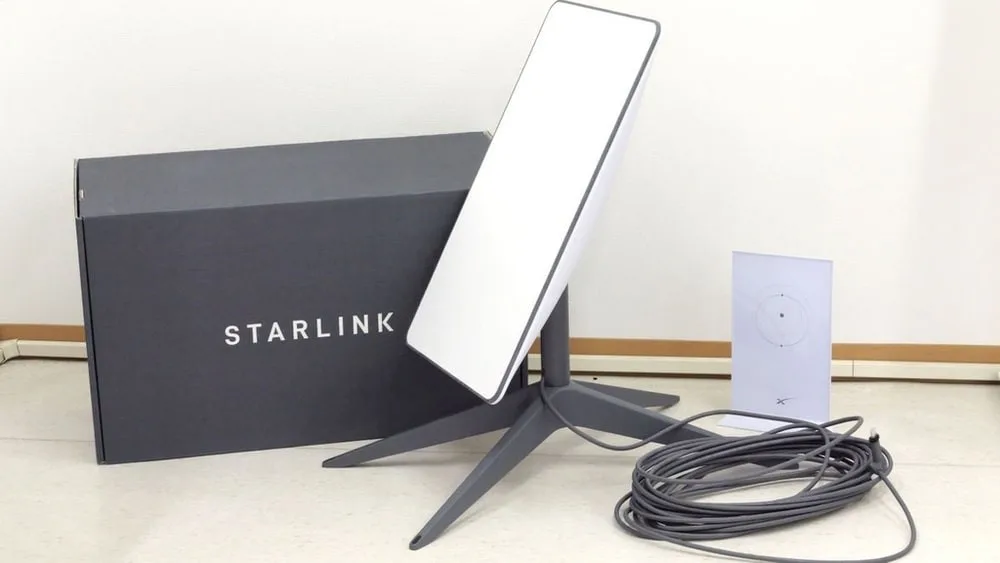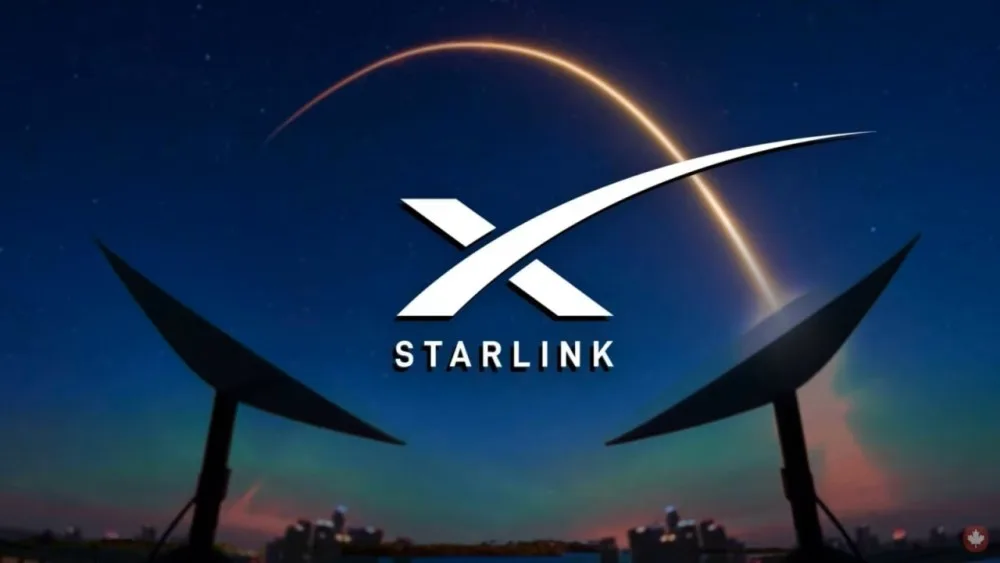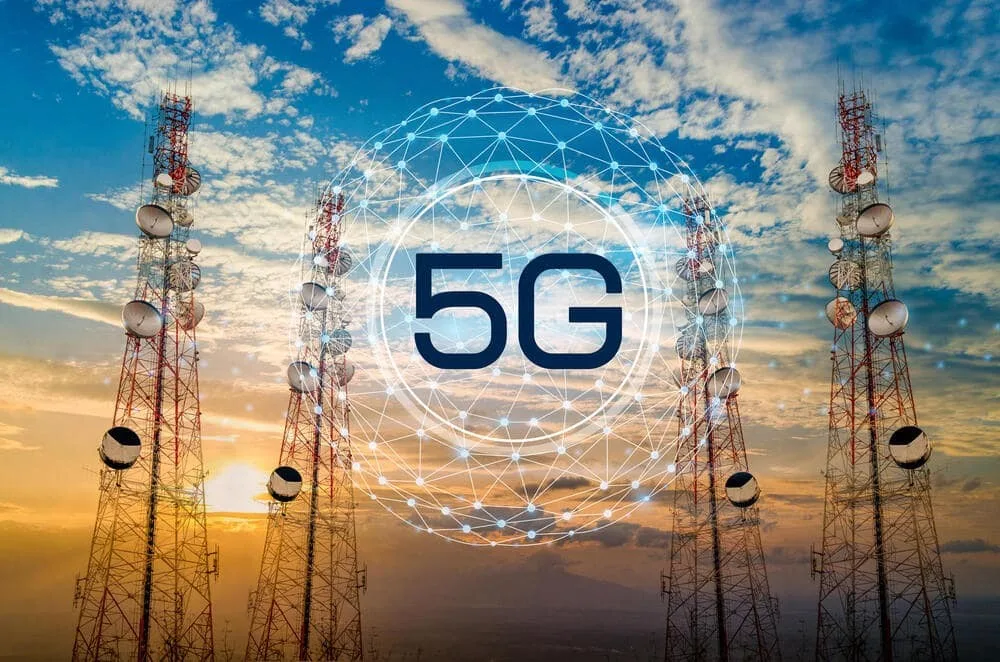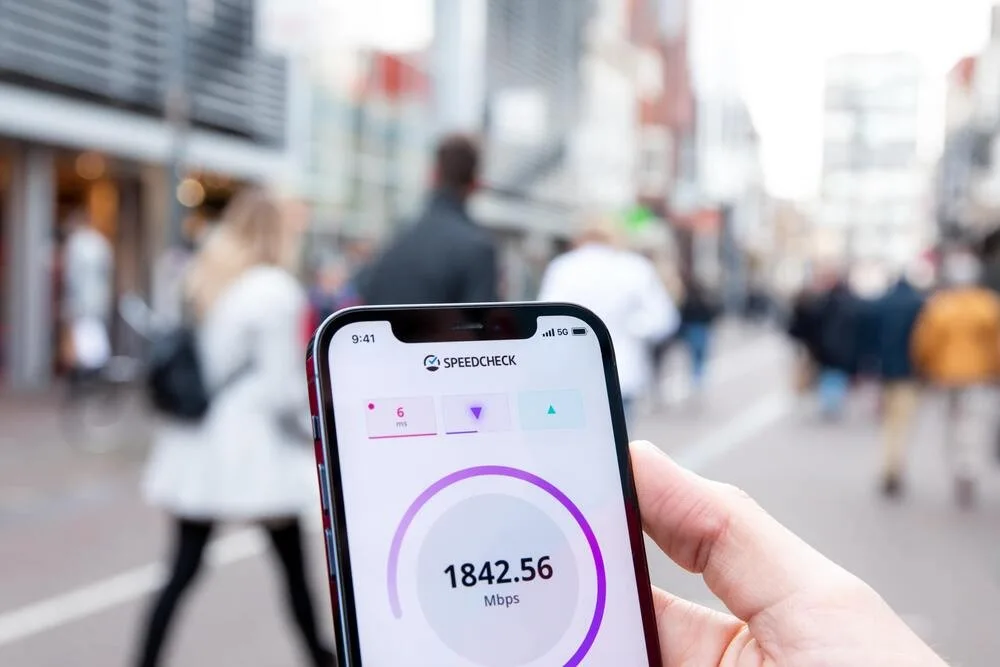1. Intro
Finding the best broadband solution can sometimes feel like searching for a needle in a haystack. That’s why I want to share my personal experience and insights to help you navigate the world of satellite internet, 5G LTE, and even 4G. I’ve spent a lot of time comparing these technologies and talking to others who’ve tested them in both urban and rural settings. Ultimately, your choice will come down to how you plan to use the internet, where you’re located, and what kind of speeds you need.
Whether you’re traveling in an RV, setting up shop in a remote cabin, or simply want a reliable backup connection in case your primary service fails, it’s essential to understand the nuances of each option. Let’s dive right in, so you can decide which technology—Starlink, 5G LTE, or even a 4G fallback—best suits your lifestyle.
2. Introduction to High-Speed Internet Solutions
High-speed internet is more than just a convenience; it’s often a necessity for work, entertainment, and communication. Traditional broadband, such as fiber or cable, typically provides reliable connectivity if you live in an area where it’s available. But what if you don’t?
apThat’s where alternative technologies step in. Satellite internet services like Starlink deliver coverage almost anywhere, including remote regions that lack terrestrial infrastructure. Meanwhile, 5G LTE can offer speeds rivaling (and sometimes surpassing) many wired connections, making it an excellent choice if you’re within range of a cell tower. Even older 4G LTE connections remain relevant, especially for those who need an economical backup solution.
In this post, I’ll outline the differences in pricing, speeds, and coverage, giving you a clearer picture of how each option might fit your unique scenario. I’ll also bring up Rogue Support for anyone who feels overwhelmed by the technical aspects. By the end, you’ll have a solid idea of what to expect from these various high-speed internet solutions.
3. Breaking Down Your Options: Starlink, 5G LTE, and 4G
I’ve noticed that many of us start comparing Starlink vs. 5G LTE by focusing solely on speed. While speeds are indeed critical, other factors like latency, cost, data caps, and equipment requirements also affect your day-to-day internet experience. Here, we’ll take a bird’s-eye view of these services and how they differ.
3.1 Starlink: A Revolutionary Satellite Internet Solution
Starlink is transforming internet connectivity with its innovative use of low Earth orbit satellites. Unlike traditional internet services that depend on nearby cell towers, Starlink offers coverage almost anywhere, provided there’s a clear view of the sky. This makes it an excellent choice for remote areas where conventional internet might be unreliable or unavailable.
How Starlink Works
Starlink operates by transmitting data through a network of satellites orbiting the Earth. With over six thousand satellites launched by SpaceX, Starlink provides a robust and extensive network. This satellite-based system allows users to connect to the internet without relying on physical infrastructure like cables or towers. While it’s convenient, it also leads to occasional fluctuations when the dish switches between satellites.
Starlink Versions and Features
Starlink offers various versions tailored to different needs, each with unique features. These versions deliver high-speed internet with low latency, making them suitable for a wide range of uses, from personal to business applications. Overall, Starlink stands out as a reliable internet solution for those in challenging locations, thanks to its ability to function independently of traditional infrastructure.

3.2 5G LTE: A Cellular-Based Powerhouse
In today’s world, staying connected is crucial, and having a dependable service is more important than ever. 5G LTE often shines when it comes to speed and reliability—provided you’re near a capable cell tower. Many users report download speeds ranging from 50 to 500 Mbps, which is sufficient for HD streaming, large file transfers, and online gaming. The biggest win here is consistency when you’re close to a tower.
How 5G LTE Internet is Delivered
5G internet is delivered through cellular networks by connecting to nearby cell towers. This technology provides various connection methods, ensuring flexibility for end users. You can rely on built-in 5G modems, SIM card routers, or even mobile hotspots. Many providers also include data bundling options, which can lower costs if you’re already on a certain phone plan.
Equipment Options for 5G LTE
When using 5G as a primary connection or as an internet backup, you have several equipment options, including routers with SIM card slots. These are excellent for multi-WAN remote deployments, allowing you to combine your 5G backup with other connections. If you’re further from a cell tower, consider an external omnidirectional or directional antenna to improve reception.
3.3 4G: An Established Yet Relevant Backup
Some people might dismiss 4G as outdated, but it remains viable, especially where 5G coverage is still limited. 4G speeds typically hover between 5 Mbps and 50 Mbps, enough for standard definition video streaming, remote work, and web browsing. For rural connectivity, 4G can still be an effective stopgap until 5G expands further.
Of course, 4G’s performance won’t rival that of 5G or Starlink in terms of sheer speed, but its cost-effectiveness and broader coverage make it a key contender for anyone on a tight budget.
4. Understanding Internet Options and When to Choose Them
Each connection type comes with pros and cons. Here’s a more detailed look at real-world scenarios that can help you figure out which service to use and when.
4.1 If You Already Have Reliable Fiber or Cable
If your existing fiber or cable broadband is performing well, it might be unnecessary to jump into these newer technologies. There’s nothing wrong with sticking to a stable wired connection if it meets your needs. However, having a backup plan is always wise. For instance, a 5G home internet solution can serve as a reliable fallback whenever your primary line goes down.
4.2 If You’re in a Remote or Underserved Area
Starlink and 5G LTE are perfect for those needing connectivity in areas where traditional terrestrial internet isn’t available. This includes situations like traveling in an RV, setting up a temporary construction site, or organizing an event in a remote location without existing infrastructure. Starlink is especially beneficial when there’s zero cellular coverage. Meanwhile, 5G can be a fantastic solution if you can pick up a strong signal from your nearest tower.
You can even combine them if you want total redundancy: Starlink for near-anywhere coverage and 5G for consistent speeds in coverage zones.

4.3 If You Want a Cheaper Backup Option
While Starlink excels at covering dead spots, 5G LTE solutions often present a more economical backup, typically around $50 per month. Some providers offer promotional rates that go even lower if you bundle services (like a cell phone plan). 4G can also serve as a budget-friendly standby if 5G is unavailable.
It’s worth keeping in mind that monthly costs can jump up if you go for an unlimited SIM or a flexible plan that you turn on and off. That said, the ability to pause and resume Starlink can be a massive plus if you only need it seasonally.
5. Detailed Look at Internet Speeds
Speed is often the primary factor for most people choosing an internet connection. Let’s explore how these technologies stack up under real-world conditions.
5.1 5G LTE Speed Ranges
5G internet, delivered via cellular towers, typically offers speeds between 50 and 500 Mbps. Many users report an average of 300 to 500 Mbps under ideal conditions. This is plenty for high-definition streaming, online gaming, and large downloads. However, if you’re in a low-coverage area, speeds can drop substantially.
4G Compatibility
When connected to a 4G LTE tower, download speeds usually range from 5 to 50 Mbps. It’s obviously slower than 5G but remains entirely functional for day-to-day tasks like web browsing, emailing, and streaming standard-definition video.
5.2 Starlink Speed Ranges
Starlink’s speed can vary depending on whether you have the “Mini,” “Gen Three,” or other hardware versions. You can usually expect download speeds from 50 to 400 Mbps and uploads ranging from 15 to 25 Mbps. The key difference is that Starlink can sometimes fluctuate more because the dish actively searches for and switches between satellites passing overhead.
That said, Starlink still offers pretty impressive throughput, especially if you’re in an area with fewer obstructions and minimal congestion on the network.
6. Latency and Gaming: Which Option Delivers a Smoother Experience?
Latency is crucial for real-time applications like online gaming or video conferencing. The lower your latency (or ping), the faster your commands register and the smoother your connection feels.
6.1 5G vs. Starlink Latency
5G networks typically have latency in the 35-45 millisecond range, giving gamers a reasonably smooth experience. Starlink, by contrast, can hover between 40-70 milliseconds. The difference might be minimal for casual gaming, but professional or competitive players could notice those extra milliseconds—especially if Starlink’s dish does a satellite handoff mid-game.
6.2 4G for Gaming
While 4G might not be the first choice for professional gaming, many players find it usable for casual online matches. It typically sees latency around 50-100 milliseconds, so you’ll notice more delay than with 5G but might still manage a decent experience. Where 4G truly shines is in cost and availability, making it a “better than nothing” fallback.
7. Pricing and Cost Considerations
Let’s explore what you can expect to pay for each service, factoring in monthly fees, upfront costs, and potential deals. Pricing is often the deal-breaker, so it’s important to understand what you’re signing up for.
7.1 5G LTE Monthly Costs
Many home internet providers offer 5G connections around $50 per month, although you might find cheaper rates if you bundle services or sign up during promotional periods. Some unlimited SIM plans can cost $65 to $90 monthly. The cost also differs if you need additional hardware like an external antenna.
7.2 Starlink Monthly Costs
Starlink tends to be pricier than 5G. A typical Starlink Roam unlimited plan might run you $165 per month. They also offer a $50 per month plan with a 50GB data cap, charging 25 cents per gigabyte beyond that. On the bright side, Starlink lets you pause your service seasonally. This flexibility is fantastic if you only need satellite internet for part of the year.
7.3 Equipment and Upfront Costs
For 5G, some providers include a router free of charge or for a small deposit. You’ll return the device if you cancel. For Starlink, you’ll need to purchase the dish, which can be a couple of hundred dollars. Still, it might not be more expensive than buying a top-tier 5G router with advanced features.
8. Geographic Flexibility and Connectivity
When it comes to coverage and availability, Starlink and 5G LTE differ significantly. Let’s delve into why that matters.
8.1 Starlink’s Anywhere-You-Go Advantage
Starlink’s main advantage is near-global coverage, as it only needs a clear view of the sky. While there’s a recommendation for a 110-degree view, many users find success with less. Campers, RV enthusiasts, and travelers appreciate this freedom. Even folks on boats can set up Starlink, though they might face additional fees for maritime usage.
8.2 5G LTE’s Dependence on Cell Towers

Unlike Starlink, 5G LTE must connect to a cell tower. If you’re out of range, your speed will plummet—or you’ll lose service entirely. Of course, 5G can be blazing fast when you’re in coverage, but step outside that zone, and you’ll see a sharp drop-off. Powerful antennas or a multi-WAN router can help, but there’s a limit if no tower is near enough.
8.3 Combining Starlink and 5G LTE for Ultimate Flexibility
Some adventurous individuals use a device like the GL INET Spitz AX or a similar travel router that accommodates both Starlink and a 5G SIM. You can switch between them depending on where you are. For instance, you might rely on 5G in a well-covered city, then flip to Starlink when you head off-grid. This approach often requires some hardware investment but might be worth it if you prize uninterrupted connectivity.
9. Data Usage: Fair Use Policies and Caps
Understanding how data limits and fair use policies work can help you avoid unexpected slowdowns or extra fees.
9.1 Data Policies for 5G
Many carriers offer unlimited data, but pay attention to the fine print. Some “unlimited” plans throttle you after a certain threshold, typically between 50GB and 100GB. Others provide truly unlimited usage with no caps, though these can cost more. If your household streams UHD videos or you frequently game online, keep an eye on your monthly consumption to avoid slowdowns.
9.2 Data Policies for Starlink
Starlink also has unlimited data on many plans, but they may deprioritize your traffic if you exceed a terabyte during peak times. In practice, most households won’t blow past a terabyte, but if you’re a power user—like streaming 4K movies or running a home server—monitoring your usage is smart.
10. Setting Up 5G and Starlink: A Quick Guide
While every setup will vary, here are the basic steps I usually follow when configuring 5G home internet and Starlink connections.
10.1 Setting Up 5G Internet
- Insert the SIM Card: Place the SIM card into the router’s designated slot.
- Power Up: Plug the router in and turn it on. It should automatically connect to the 5G network if available.
- Check the WiFi: Wait for the router to establish a WiFi network. You can then connect devices or plug in an Ethernet cable for more stable speeds.
- Optimize Placement: Locate the router near a window or in an elevated position for the strongest signal. Try different spots if your speeds aren’t satisfactory.
10.2 Starlink Installation Tips
Installing your Starlink dish can be straightforward. For a quick setup, place the dish on its standard base in a clear, open area. If you prefer a rooftop mount or a higher vantage point, consider professional help to ensure the dish is secure and unobstructed by trees or buildings.
After physically installing the dish, use the Starlink app to finalize your network settings. Check for software updates; the dish will automatically adjust to optimize signal reception.
11. Common Real-World Scenarios and Use Cases
Sometimes, the best way to decide on a technology is to imagine it in action. Here are a few typical setups where one might prefer Starlink over 5G, or vice versa—and how you could integrate a 4G fallback just to be safe.
11.1 The Remote Cabin Retreat
Imagine you have a secluded cabin that’s too far from any cell tower for decent 5G or 4G. Starlink becomes the natural choice. You set up the dish on the roof with a view of the open sky, and enjoy decent speeds for video calls, streaming, or simply staying connected to the modern world. If you find a local WISP (Wireless Internet Service Provider) that offers about 30 Mbps consistently, you might use it for stable video calls while letting Starlink handle bigger downloads or streaming activities.
11.2 The Urban Backup Strategy
You live in a city with excellent 5G coverage. Your main internet line is cable or fiber. Occasionally it goes down. Instead of losing productivity, you keep a 5G modem in a closet, ready to pop on whenever your primary line fails. You might pay around $50 monthly, but it’s worth it for peace of mind.
11.3 The Digital Nomad Lifestyle
You travel full-time in an RV, living off the grid in national parks or campgrounds. Starlink is your go-to because it works in places no cell tower can reach. Sometimes, however, you park near a city with solid 5G coverage. If you keep a 5G data plan, you can easily switch to it and enjoy more consistent speeds and potentially lower latency. Meanwhile, your Starlink dish remains the ultimate fallback for those remote campsites.
12. Conclusion: Making the Right Choice for Your Connectivity
Choosing between Starlink, 5G LTE, and even old-school 4G depends on where you are, what you’re willing to spend, and how much speed or data you actually need. Starlink offers near-global coverage and can deliver respectable speeds, making it ideal for locations off the beaten path. 5G LTE shines if you’re within range of a good cell tower, often providing more consistent speeds than satellite—plus potentially lower latency, which is a big deal for gamers and frequent video callers. 4G continues to serve as a solid, budget-friendly fallback if 5G coverage is spotty.
If you’re still feeling overwhelmed by the technicalities of setting up or troubleshooting your network, remember that Rogue Support exists to simplify the process. Sometimes, a quick conversation with a connectivity specialist can save you from countless hours of frustration. I recommend checking them out if you need a reliable team to guide you through everything from design to implementation to troubleshooting.
When you factor in your location, budget, and speed requirements, the best solution usually emerges. Whether you choose the flexibility of Starlink, the speed of 5G, or a cost-effective 4G plan, you can stay connected—and that’s what truly matters.
Happy browsing and safe travels!


